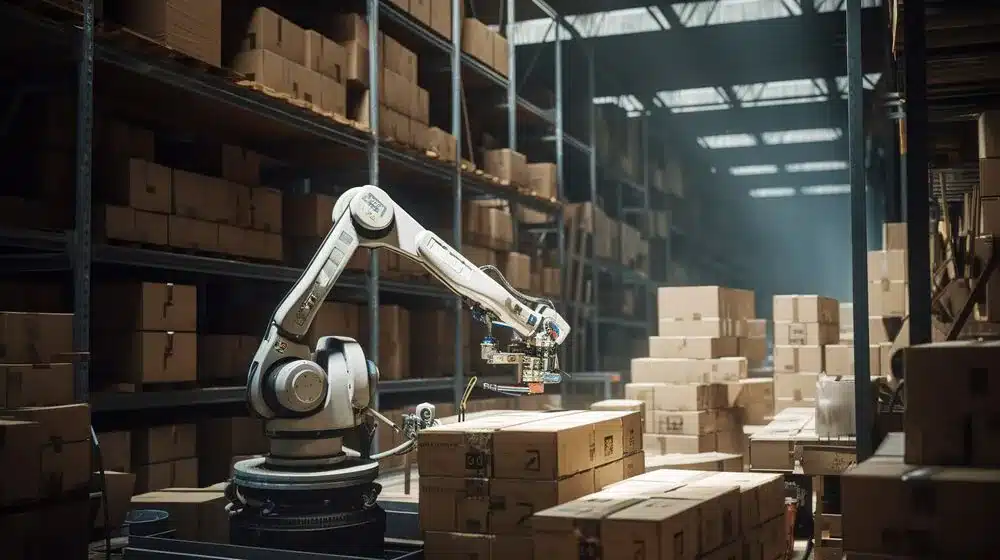Holiday shipping is already in full swing as the end of the year approaches. But, before products are displayed on a supermarket shelf or dispatched from a post office, they must be transported from their point of origin to their destination. The method of transportation—whether by land, air, or water—depends on factors such as weight, volume, type of cargo, and destination. The logistics sector is a cornerstone of the global economy, serving the needs of nearly all industries. Since the start of the Industrial Revolution, the need for transporting manufactured goods has skyrocketed, fueling economic growth. Key players in this industry include DHL, UPS, and FedEx. Moreover, online giants like Amazon are delving into logistics to enhance their supply chains.According to Statista, “In the fiscal year of 2022, the FedEx Ground segment of FedEx Corporation delivered just over three billion packages.” With such a high volume of shipments moving globally every day, the logistics of transporting cargo is getting a much-needed hand from robotics technology.
A Labor-Intensive Operation
An essential step in transporting freight is loading and unloading the semi-trailers used by the key players in the industry. Standard dry van semi-trailers are designed to transport dry products due to the fully enclosed nature of the trailer that protects freight from the elements. Palletized products are the most common freight as they can be efficiently and safely loaded or unloaded with a forklift or pallet jack from a dock. These semi-trailers vary in length but are usually from 48–53 feet and can have a pallet count of 24 to 26 with a cargo weight of approximately 20,000kg.But palletizing products is not always possible, and sometimes trailers must be loaded manually, package by package. This is an exhaustive labor-intensive operation that often requires two workers and the use of a telescopic truck loading conveyor. As personnel strive to meet demanding loading and turnaround requirements, shipping companies will need to spend extra time and extra dollars maintaining truck loaders, which constitutes a significant drain on resources. Additionally, in high-traffic shipping areas, such as loading docks, collisions between forklifts and loading equipment are almost inevitable, and these machines’ repair costs can easily impact the bottom line.Well, all this is about to change. With the introduction of artificial intelligence (AI) truck loading robots, the dawn of a new era in semi-truck loading promises to radically alter how semi-trucks are loaded.
Novel Robotics
Dexterity AI and FedEx unveiled a first-of-its-kind robotics trailer loading technology. These dock-ready smart AI robots (Figure 1) will make short work of semi-trailer loading and unloading and integrate easily with existing dock infrastructure. Their dual-arm design makes it possible to provide twice the pick rate and full truck reach. This dock-ready system will autonomously drive in and out of the trailers as it loads or unloads. Additionally, there is no pre-sequencing or look ahead required, and conveyable staging is not needed. Small boxes and big boxes. Stiff cardboard and soft deformable plastic. This AI robot system can turn them all into densely packed trailers, turning random boxes into stable walls.

Featured Product
The relentless demand for efficient logistics calls for cutting-edge solutions. Broadcom’s AEAT-901x-S06 Absolute Magnetic Kit Encoders deliver with Broadcom’s expertise in ensuring accurate position feedback. Integrating these top-tier components from an industry-leading manufacturer offers an unparalleled advantage in the development of AI-driven truck-loading robots, making them ideally equipped to handle the complexities of modern-day logistics.
The logistics domain, especially the truck loading sector, is transitioning towards automation to address manual labor challenges and meet surging package delivery demands. The Broadcom AEAT-901x-S06 Magnetic Kit Encoders can play a pivotal role in this transformation. These encoders provide absolute angular position detection, making them ideal for ensuring that AI truck loading robots achieve the utmost precision during their operations.
With variations in package weight, size, and material, precision is key to efficient stacking and arranging. The high-resolution package options—ranging from 10 bit to 18 bit—allow for a nuanced response, depending on the specific requirements of the operation. Furthermore, the encoder’s resistance to oil and dirt ensures durability even in a demanding loading dock environment. The fact that they work under extreme temperatures without any drop in performance means that regardless of the environmental conditions, the robots can maintain optimal loading and unloading efficiency. The three-wire Synchronous Serial Interface (SSI) will seamlessly relay positioning data, ensuring the AI robot’s actions are timely and accurate. The compact design of the Broadcom AEAT-901x-S06 also means it won’t add bulk to the robots, keeping them agile and efficient.
Takeaway
As the year-end surge in package shipments presents logistical challenges, the transportation and delivery process stands as a pillar of our global economy. Historically rooted in manual labor, the loading and unloading of semi-trailers has typically drained resources and been prone to accidents, especially during peak times. However, with new and innovative partnerships emerging between logistics and robotics, the introduction of AI-driven robotic loading technology promises to redefine this process. By integrating AI robots capable of handling a myriad of package types and sizes, we are witnessing a transformative leap in the logistics sector. As these robotic advancements become more prevalent, they signify a pivotal moment in the industry, offering efficiency, reducing costs, and setting the stage for a futuristic, more streamlined global supply chain.
Sources
- “AI-powered software that transforms warehouse robotics.” Dexterity, https://www.dexterity.ai/product/robotic-truck-loading
- Garland, Max. “FedEx testing AI-powered, trailer-loading robots.” Supply Chain Dive, September 27, 2023, https://www.supplychaindive.com/news/fedex-testing-ai-powered-trailer-loading-robots-dexterity-ai/694837/
- Statista. “FedEx Ground’s total annual package volume 2016-2022.” September 22, 2022, https://www.statista.com/statistics/878581/fedex-ground-total-annual-package-volume/













